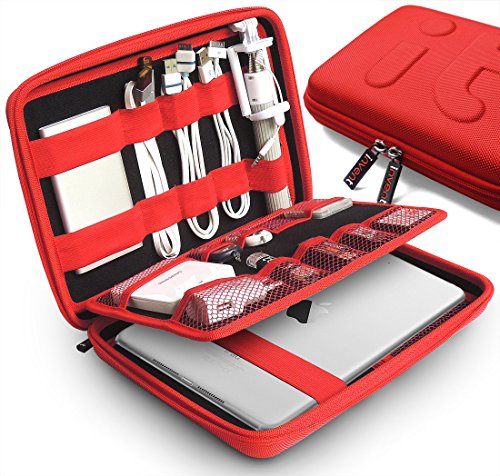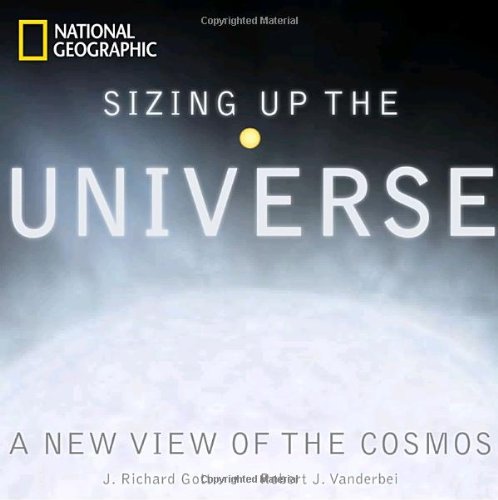Sizing Up the Universe: The Cosmos in Perspective
Sizing Up the Universe reveals an ingenious new way to envision the outsize proportions of space, based on the work of Princeton University professors Richard Gott and Robert Vanderbei. Using scaled maps, object comparisons, and beautiful space photographs, it demonstrates the actual size of objects in the cosmos —from Buz Aldrin’s historic footprint to the
Sizing Up the Universe reveals an ingenious new way to envision the outsize proportions of space, based on the work of Princeton University professors Richard Gott and Robert Vanderbei. Using scaled maps, object comparisons, and beautiful space photographs, it demonstrates the actual size of objects in the cosmos —from Buz Aldrin’s historic footprint to the visible universe and beyond. The authors offer visual comparisons with astonishing precision and maximum reader-friendliness, conveying clear and understandable explanations of unimaginable vastness. Plus, as an unprecedented bonus, their 1.5-million-selling Map of the Universe is published here for the first time ever in a book—presented on an oversize foldout page that maximizes its eye-popping presentation of satellites, planets, stars, and galaxies. Based on the popularity of the map and of Richard Gott’s Time Travel in Einstein’s Universe, and offering innovative ways to appreciate the majesty of the universe, this new title should soar.
From Sizing Up the Universe
Click on the images below to open larger versions.



 In this close-up view, the Carina Nebula features a pair of Bok globules (left and right), which are thought to be concentrations of dust condensing into yet-to-be-born stars. (NASA, ESA, p. 6-7) The Western Veil Nebula, known as the Witch’s Broom, is part of a huge supernova remnant that spans more than six moon widths (diameters) across in the night sky. (Robert J. Vanderbei, p. 8-9) The band of light known as the Milky Way is at its widest when one looks at it in the direction of the galactic center. (Jim Richardson, p. 25) The Pan-STARRS 1 telscope complex in Maui, Hawaii maps the sky. (Stephen L. Alvarez,. 44-45)
In this close-up view, the Carina Nebula features a pair of Bok globules (left and right), which are thought to be concentrations of dust condensing into yet-to-be-born stars. (NASA, ESA, p. 6-7) The Western Veil Nebula, known as the Witch’s Broom, is part of a huge supernova remnant that spans more than six moon widths (diameters) across in the night sky. (Robert J. Vanderbei, p. 8-9) The band of light known as the Milky Way is at its widest when one looks at it in the direction of the galactic center. (Jim Richardson, p. 25) The Pan-STARRS 1 telscope complex in Maui, Hawaii maps the sky. (Stephen L. Alvarez,. 44-45)



 With 14,000,000-power magnification provided by a hypothetical supertelescope, we would be able to see dramatic views of nearby stars as well as the footprint Buzz Aldrin left behind on the moon. (Stars: Robert J. Vanderbei, p. 43) The moon is roughly a quarter the size of Earth. When astronauts on the moon looked back at Earth, it was four times the angular diameter of the moon as seen from Earth. (NASA, p. 144) The Butterfly Nebula, a dying star shedding gas. The ring of dust at the narrow waist, thrown off by the star earlier, now forces newly ejected gas out the top and bottom, creating a nebula that is more than two lightyears in diameter. (NASA, ESA and the Hubble Heritage Team STScI/AURA, p. 187) Buzz Aldrin on the moon, photographed by Neil Armstrong. Armstrong is reflected in the visor. (NASA, p. 191)
With 14,000,000-power magnification provided by a hypothetical supertelescope, we would be able to see dramatic views of nearby stars as well as the footprint Buzz Aldrin left behind on the moon. (Stars: Robert J. Vanderbei, p. 43) The moon is roughly a quarter the size of Earth. When astronauts on the moon looked back at Earth, it was four times the angular diameter of the moon as seen from Earth. (NASA, p. 144) The Butterfly Nebula, a dying star shedding gas. The ring of dust at the narrow waist, thrown off by the star earlier, now forces newly ejected gas out the top and bottom, creating a nebula that is more than two lightyears in diameter. (NASA, ESA and the Hubble Heritage Team STScI/AURA, p. 187) Buzz Aldrin on the moon, photographed by Neil Armstrong. Armstrong is reflected in the visor. (NASA, p. 191)










 In this close-up view, the Carina Nebula features a pair of Bok globules (left and right), which are thought to be concentrations of dust condensing into yet-to-be-born stars. (NASA, ESA, p. 6-7) The Western Veil Nebula, known as the Witch’s Broom, is part of a huge supernova remnant that spans more than six moon widths (diameters) across in the night sky. (Robert J. Vanderbei, p. 8-9) The band of light known as the Milky Way is at its widest when one looks at it in the direction of the galactic center. (Jim Richardson, p. 25) The Pan-STARRS 1 telscope complex in Maui, Hawaii maps the sky. (Stephen L. Alvarez,. 44-45)
In this close-up view, the Carina Nebula features a pair of Bok globules (left and right), which are thought to be concentrations of dust condensing into yet-to-be-born stars. (NASA, ESA, p. 6-7) The Western Veil Nebula, known as the Witch’s Broom, is part of a huge supernova remnant that spans more than six moon widths (diameters) across in the night sky. (Robert J. Vanderbei, p. 8-9) The band of light known as the Milky Way is at its widest when one looks at it in the direction of the galactic center. (Jim Richardson, p. 25) The Pan-STARRS 1 telscope complex in Maui, Hawaii maps the sky. (Stephen L. Alvarez,. 44-45)


 With 14,000,000-power magnification provided by a hypothetical supertelescope, we would be able to see dramatic views of nearby stars as well as the footprint Buzz Aldrin left behind on the moon. (Stars: Robert J. Vanderbei, p. 43) The moon is roughly a quarter the size of Earth. When astronauts on the moon looked back at Earth, it was four times the angular diameter of the moon as seen from Earth. (NASA, p. 144) The Butterfly Nebula, a dying star shedding gas. The ring of dust at the narrow waist, thrown off by the star earlier, now forces newly ejected gas out the top and bottom, creating a nebula that is more than two lightyears in diameter. (NASA, ESA and the Hubble Heritage Team STScI/AURA, p. 187) Buzz Aldrin on the moon, photographed by Neil Armstrong. Armstrong is reflected in the visor. (NASA, p. 191)
With 14,000,000-power magnification provided by a hypothetical supertelescope, we would be able to see dramatic views of nearby stars as well as the footprint Buzz Aldrin left behind on the moon. (Stars: Robert J. Vanderbei, p. 43) The moon is roughly a quarter the size of Earth. When astronauts on the moon looked back at Earth, it was four times the angular diameter of the moon as seen from Earth. (NASA, p. 144) The Butterfly Nebula, a dying star shedding gas. The ring of dust at the narrow waist, thrown off by the star earlier, now forces newly ejected gas out the top and bottom, creating a nebula that is more than two lightyears in diameter. (NASA, ESA and the Hubble Heritage Team STScI/AURA, p. 187) Buzz Aldrin on the moon, photographed by Neil Armstrong. Armstrong is reflected in the visor. (NASA, p. 191)
Comments